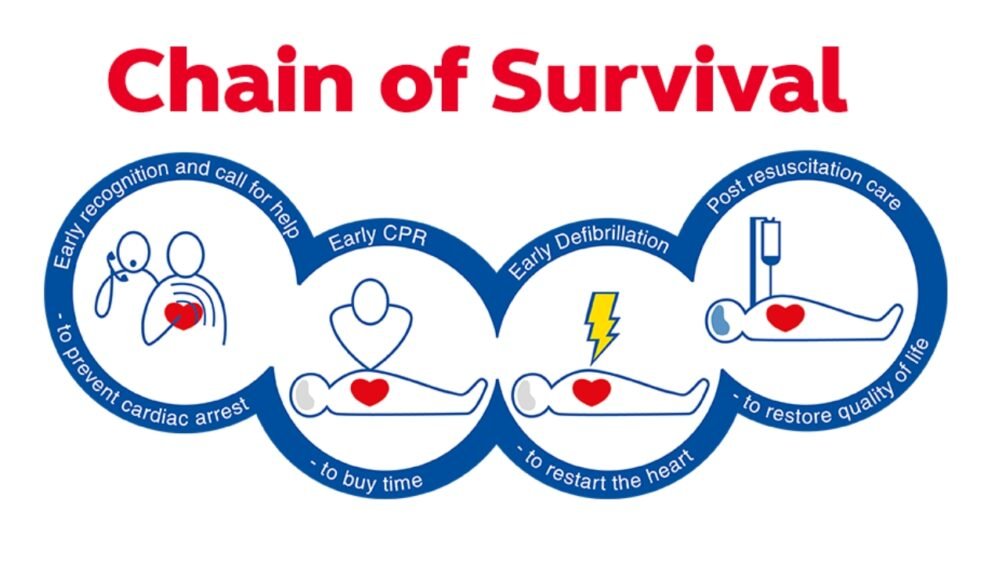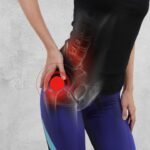Cardiac Chain of Survival: Your Lifeline During Heart Emergencies

Every year, heart disease remains one of the leading causes of death in the United States, with heart attacks affecting millions of Americans. When a person experiences sudden cardiac arrest (SCA), every second counts. The sooner the individual receives the right intervention, the higher their chances of survival. This is where the cardiac chain of survival comes in – a concept designed to increase survival rates by focusing on the timely and coordinated response to cardiac emergencies. In this blog, we will explore the key components of the cardiac chain of survival, why it’s essential for saving lives, and how you can be part of the chain to help in life-threatening situations.
The Cardiac Chain of Survival: A Critical Overview
The cardiac chain of survival is a series of actions that, when performed promptly, significantly improve the chances of survival following a cardiac arrest. This life-saving chain includes four key steps: early recognition and activation of the emergency response system, early cardiopulmonary resuscitation (CPR), early defibrillation, and post-cardiac arrest care. Let’s dive into each element and understand why it matters.
Early Recognition and Activation of Emergency Services
When someone suffers from sudden cardiac arrest, the most crucial step is to recognize the situation immediately. Time is of the essence, and early intervention can significantly affect the outcome. Recognizing the signs of a heart attack or cardiac arrest involves noticing symptoms such as chest pain, difficulty breathing, dizziness, or loss of consciousness. Once you identify that someone is experiencing a cardiac emergency, it is essential to call 911 or activate the emergency response system.
“By calling 911 immediately, you ensure that the person receives the appropriate medical attention right away, and that the emergency team is ready to intervene as quickly as possible,”
explains Dr. David C. McManus, a cardiologist at the University of Massachusetts Medical School.
“The faster medical responders arrive, the better the chances for the individual.”
Early Cardiopulmonary Resuscitation (CPR
After activating emergency services, the next important step is performing CPR. CPR includes chest compressions and, in some cases, rescue breaths. The goal is to keep oxygenated blood circulating to vital organs, especially the brain, until further help arrives. Performing CPR can double or even triple the chances of survival after cardiac arrest, as it helps maintain circulation.
Effective chest compressions involve pressing down on the victim’s chest with sufficient force to allow for blood flow. Ideally, compressions should be administered at a depth of at least 2 inches, at a rate of 100-120 compressions per minute. Bystanders without CPR training should focus solely on chest compressions, which are also known as hands-only CPR, as this can still provide critical support to the victim’s circulatory system.
Early Defibrillation
Defibrillation is the process of delivering an electric shock to the heart to restore its normal rhythm. Sudden cardiac arrest is often caused by an arrhythmia, which disrupts the heart’s electrical system. The presence of a defibrillator—either an Automated External Defibrillator (AED) or a manual defibrillator—can deliver a shock to the heart, potentially saving the victim’s life.
AEDs are available in many public places, such as schools, airports, and shopping malls. Anyone can use an AED in an emergency situation. These devices are designed to be user-friendly, providing audible instructions to guide you through the process. Early defibrillation, especially if performed within the first few minutes after cardiac arrest, can significantly improve the chances of survival.
Post-Cardiac Arrest Care
The final step in the cardiac chain of survival involves post-cardiac arrest care, which is crucial for stabilizing the patient and preventing further complications. This care typically takes place in a hospital and involves advanced life support, including medication, mechanical ventilation, and other interventions to support the heart and other organs. The post-arrest phase is critical because the brain and other organs may have been deprived of oxygen, and proper treatment is needed to minimize any long-term damage.
Advanced post-cardiac care in specialized medical settings can dramatically improve recovery outcomes for those who survive cardiac arrest.
Why the Cardiac Chain of Survival Matters
The cardiac chain of survival is designed to provide a systematic approach that maximizes the chances of survival following a sudden cardiac event. But it’s not just for medical professionals—everyone can play a role. Training and awareness can empower regular citizens to act effectively when faced with a life-threatening emergency. By knowing the steps of the chain, having the courage to perform CPR, and using available defibrillators, you become a crucial part of a community effort to save lives.
According to the American Heart Association, approximately 350,000 cardiac arrests occur outside of a hospital each year, with only around 10% of those victims surviving. However, the survival rate can increase significantly if bystanders intervene quickly and correctly. Communities that emphasize training in CPR and the use of AEDs, along with encouraging early emergency response activation, have been shown to have much higher survival rates.
How You Can Get Involved
Being trained in CPR is one of the most valuable skills you can have. Many local organizations, such as the Red Cross and local hospitals, offer CPR training courses. Learning CPR can help you step in when emergency responders are still on their way.
Advocate for AED Accessibility
Speak to local businesses, schools, and community centers about making AEDs more accessible. Public awareness and training can ensure that defibrillators are used effectively during emergencies.
Spread Awareness
Share your knowledge of the cardiac chain of survival with friends and family. Encourage others to become trained in CPR and first aid. The more people who understand how to react in an emergency, the safer the community becomes.
Conclusion
The cardiac chain of survival is not just a theoretical concept; it’s a practical and essential framework for saving lives. By understanding and acting on each of its four components—early recognition, CPR, defibrillation, and post-cardiac care—you can make a significant difference in an emergency situation. The quicker the intervention, the higher the chances of survival. Taking steps to educate yourself and those around you can help increase survival rates and contribute to building a community of life-savers.
As Dr. McManus concludes,
“In cardiac emergencies, seconds matter. The cardiac chain of survival provides a clear, effective path to improve survival outcomes and ultimately save lives.”
By learning CPR, becoming familiar with AEDs, and advocating for better access to emergency services, we can all be part of the cardiac chain of survival—a chain that could be the difference between life and death.
































































































































































































































































































































































































